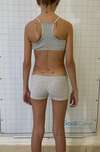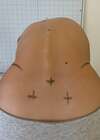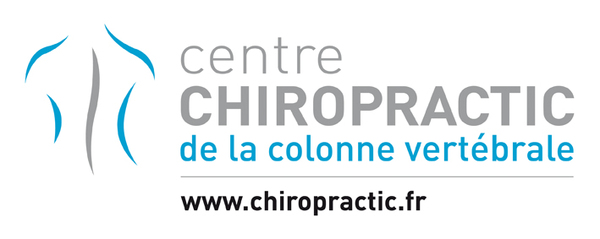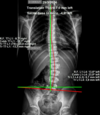How can you detect idiopathic scoliosis in your children?
Scoliosis is a deviation of the spine when viewed from the front.
It's important to have your back assessed regularly for signs of scoliosis in both children and adults! Any changes should always be evaluated further.
In this article, I show you how to easily detect spinal or postural abnormalities.
There are a number of "red flags" to look out for to indicate that something is wrong with your back. These "red flags" may differ between children and adults.
If one or more of these signs are present, it is important to consult a specialist for a full assessment.
For children and teenagers
Regular screening of growing children and adolescents for these signs can lead to earlier diagnosis and better therapeutic results. During the growth spurt between the ages of 6 and 16, it is particularly important to monitor any changes so that immediate action can be taken.
Standing and looking at your child's back

Stand in a neutral, relaxed posture, feet slightly apart and arms at your sides.
Use these clues as a guide for warning signs:
1/Equal shoulder heights or one shoulder higher than the other
2/One scapula stands out more than the other
3/A visible curve
4/Hips not at the same height.
5/Asymmetrical waist
Leaning behind your child or sideways

Bend forward with feet together and knees straight, arms hanging together with fingers pointing down.
Use the clues below as a guide to the warning signs:
1/Over back hump
2/Lower back hump
For the elderly
Scoliosis is often regarded as a disease that only affects teenagers. In fact, it can develop at any time, including in adulthood. We call it de novo scoliosis.
As the population ages, the prevalence of degenerative diseases such as de novo scoliosis increases.
The first "alarm signals" are:
1/Forward tilt
2/sinking forward,
3/arched position
4/Loss of height when standing or sitting, the person "settles".
5/Pain
Balance problems and more frequent falls
The person leans more to one side
If you notice similar signs in someone close to you, don't hesitate to contact us. It's never too late to take action and find relief.
If you have any questions, please e-mail me at cccv@chiropractic.fr


